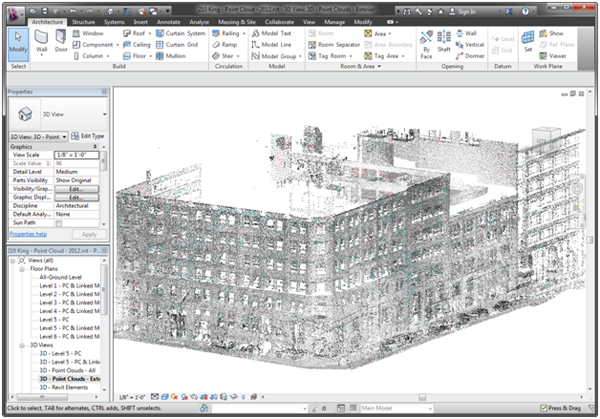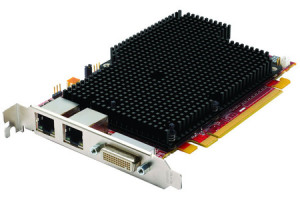Desktop virtualization technology has advanced greatly in recent years and is beginning to offer the robust performance, superior graphics, and quick response times required by users of CAD and other compute-intensive applications. On top of those benefits, virtualization brings other benefits to the CAD user. For instance, virtualization allows remote workers to do their jobs anywhere while maintaining a high level of security for the data stored back on site. It is also perfect for remote file viewing and collaboration, as the speed issue isn't as bothersome as it is during the actual work process. With the right tools, you can create a virtualized CAD experience that is as good as a desktop CAD workstation. Here's how.
Read More
Topics:
Workstations,
RAM,
Desktop Virtualization,
CAD
I recently read an article by an Intel product manager on the need for “ECC” (error correction code) memory in CAD workstations. From the article: "Corrupted data can impact every aspect of your business, and worse yet you may not even realize your data has become corrupted. Error-correcting code (ECC) memory detects and corrects the more common kinds of internal data corruption."
Read More
Topics:
Workstations,
RAM,
Hardware,
Hard Drive,
GPU,
Memory,
Graphics Cards,
AMD,
Intel,
CAD
Read More
Topics:
Workstations,
Autodesk,
RAM,
Hardware,
Hard Drive,
AutoCAD,
Processors,
Operating Systems,
RAID,
Upgrade,
Video Cards,
Operating System,
Windows,
CAD
Here at CADspeed, we get a lot of questions about buying new hardware for CAD applications. While the answer to, "What CAD hardware should I buy?" varies widely based on the person asking the question, it always starts in the same place: with the requirements of the CAD software you plan to use.
Read More
Topics:
Workstations,
Autodesk,
RAM,
Hard Drive,
AutoCAD,
Processors,
Revit,
GPU,
Inventor,
Graphics Cards,
Benchmark,
Mobile Workstations,
Video Cards
Where do you begin your quest for the right workstation? This particular hardware search should start with your software.
Read More
Topics:
Workstations,
Autodesk,
RAM,
Hardware,
Graphics Card,
Hard Drive,
Processors,
GPU,
Memory,
Graphics Cards,
AMD,
Connectivity,
Video Cards,
Intel,
CAD
Reality capture is a boom business for the building industry. With roughly 5 million existing commercial buildings in the United States alone, it’s easy to understand why. Laser-scanner-based reality capture is the dominant methodology used today to accurately capture the 3D state of an existing building. However, the typical laser-scan-based point cloud is in the hundreds of millions of 3D points, sometimes even going into the billions of points. With this additional data overhead on top of an already dense Building Information Model, it’s important to optimize your workstation hardware to deliver a productive user experience.
Read More
Topics:
Workstations,
Autodesk,
RAM,
Hardware,
Graphics Card,
Hard Drive,
Processors,
Revit,
SSD Drive,
GPU,
Memory,
Graphics Cards,
Connectivity,
Backup System,
Video Cards,
CAD
Spring has arrived, and the annual release of new CAD hardware is as dazzling as the blossoms on the trees outside. This season marks new beginnings, and the sense of renewal makes the CADspeed editors feel like digging into the latest releases and watching our hard work grow into something new and spectacular.
Read More
Topics:
Dell Business Workstation,
Workstations,
RAM,
Hardware,
Graphics Card,
Hard Drive,
AutoCAD,
Processors,
GPU,
Memory,
Graphics Cards,
AMD,
Video Cards,
Operating System,
Dell Workstations,
Windows,
CAD
Autodesk has released the platform and system requirements for AutoCAD 2013, which was launched on March 27, 2012. You can review the system requirements on the Autodesk website.
Read More
Topics:
Workstations,
Autodesk,
RAM,
Hardware,
Graphics Card,
Hard Drive,
32-Bit,
AutoCAD,
Processors,
Operating Systems,
GPU,
Memory,
Graphics Cards,
Upgrade,
Video Cards,
Operating System,
64-Bit,
Windows
Memory size and speed, or RAM, can significantly impact performance, and depending on the application, could influence throughput more than anything else in your CAD workstation. Usually there's a sweet spot. To find it, start with the minimum recommendation for your primary software, then get a feel for how much more memory you'll get with incremental spending.
Read More
Topics:
Workstations,
RAM,
Hardware,
Memory,
CAD












